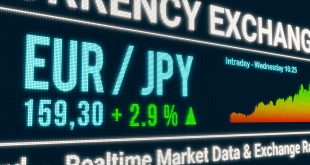Liquidity, the lifeblood of financial markets, has been a focal point for investors and analysts on Wall Street, particularly after turbulent periods marked by crises and volatility. In recent months, the narrative around liquidity in U.S. stocks and bonds has shifted, with signs of recovery tempered by underlying concerns. Analysts are cautiously optimistic, pointing to data suggesting liquidity is returning to pre-tightening levels, yet challenges like short covering, trade war fears, and specific sector struggles remind us that the market’s plumbing isn’t fully fixed. This article explores the current state of liquidity on Wall Street, weaving together recent data and real-world implications.
The U.S. Treasury market, often seen as the backbone of global finance, has shown notable improvement in liquidity since the banking turmoil of March 2023. Standard metrics like bid-ask spreads—the difference between the highest price a buyer will pay and the lowest a seller will accept—have narrowed significantly since mid-2023, stabilizing at levels last seen before the Federal Reserve’s aggressive rate hikes began in 2022. Order book depth, which measures the volume of securities available at the best prices, has also risen, though it dipped temporarily in August 2024 amid global equity market jitters. These trends suggest that traders can now buy and sell Treasury securities with less price disruption, a stark contrast to the liquidity strains during the COVID-19 crisis or the 2023 bank failures. Analysts attribute this recovery partly to declining volatility, which eases the risk for market makers to hold inventory.
In the stock market, however, the picture is more complex. A recent surge in U.S. equities, with the S&P 500 rallying over 4% in a single week in early April 2025, was driven partly by sudden short covering—investors rushing to buy back borrowed shares to close positions. This frenzy, while boosting prices, exposed low liquidity in certain pockets of the market. When liquidity is thin, even small trades can trigger outsized price swings, amplifying volatility. For instance, the rapid unwinding of short positions in tech-heavy stocks caught traders off guard, as low market depth meant fewer shares were available to absorb the buying pressure. Despite these hiccups, broader liquidity metrics, such as trading volumes and turnover ratios, indicate that stock markets are functioning better than during the 2022 bear market, when liquidity hit levels not seen since the 2020 pandemic selloff.
Global uncertainties, particularly fears of a tariff-driven trade war, continue to cast a shadow over liquidity. Chinese insurers, for example, have poured billions into domestic stocks to counter the economic fallout from escalating U.S. tariffs under President Trump’s policies. This influx has bolstered liquidity in China’s markets but highlights how geopolitical tensions can redirect capital flows, potentially straining liquidity elsewhere. On Wall Street, tariff concerns have made institutional investors cautious, reducing their willingness to trade large blocks of shares and further thinning liquidity in certain sectors like manufacturing and tech, which are vulnerable to trade disruptions.
Closer to home, individual stocks like IDFC First Bank illustrate how liquidity challenges can intersect with company-specific woes. The Indian bank’s shares hit a 52-week low in April 2025, dropping to ₹52.5 amid a 6.71% decline over two days. A low credit-deposit ratio of 94.19% and a 53.6% plunge in profitability signaled liquidity constraints, making it harder for the bank to fund operations or attract investors. This case underscores a broader truth: even as market-wide liquidity improves, idiosyncratic risks—whether from poor financials or sector-specific pressures—can create pockets of illiquidity that ripple through portfolios.
Despite these challenges, analysts are encouraged by the broader trend. The Federal Reserve’s standing repo facility, introduced in 2021, and the Treasury’s buyback program for less liquid “off-the-run” securities have helped stabilize markets. Trading volumes in major exchanges like the NYSE have risen steadily in 2025, with average daily turnover surpassing $90 billion in Q1, up from $80 billion a year ago.
Volatility indices, like the VIX, have also trended lower, hovering around 15 compared to peaks above 30 in 2022, signaling calmer waters for liquidity provision. Yet, some warn that the bond market remains vulnerable. Fears of a liquidity crisis persist, as rising yields and policy uncertainty could strain dealers’ balance sheets, echoing the chaos of March 2020 when the Fed had to step in as a buyer of last resort.
1Wall Street’s liquidity is on the mend, buoyed by tighter spreads, deeper order books, and robust trading activity. But the recovery is uneven, with short-term shocks like short covering and tariff fears exposing fragilities. For investors, the lesson is clear: while the market’s pipes are flowing again, they’re not immune to clogs. Staying vigilant—monitoring both macro trends and company-specific risks—will be key to navigating this evolving setting.

 Noor Trends News, Technical Analysis, Educational Tools and Recommendations
Noor Trends News, Technical Analysis, Educational Tools and Recommendations




